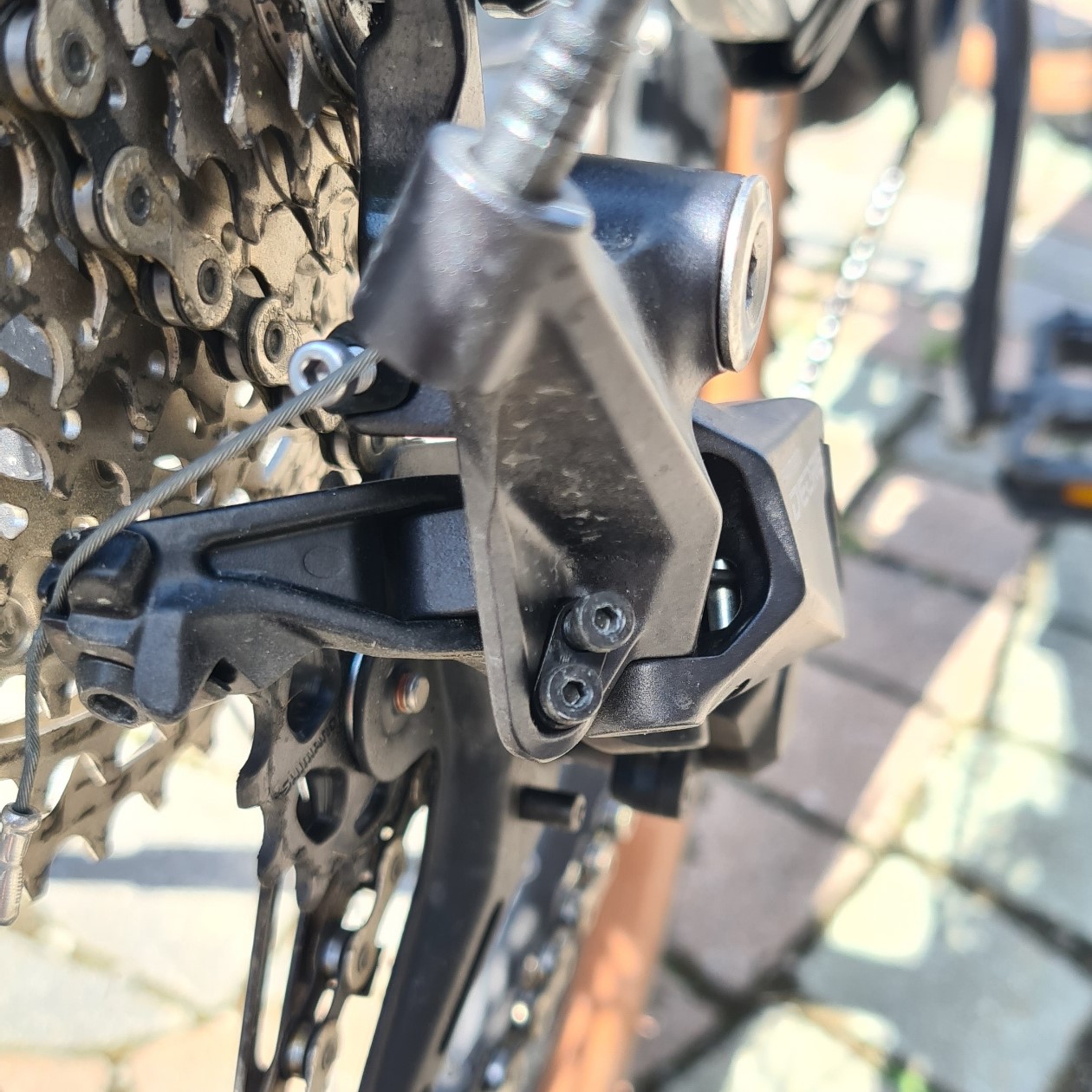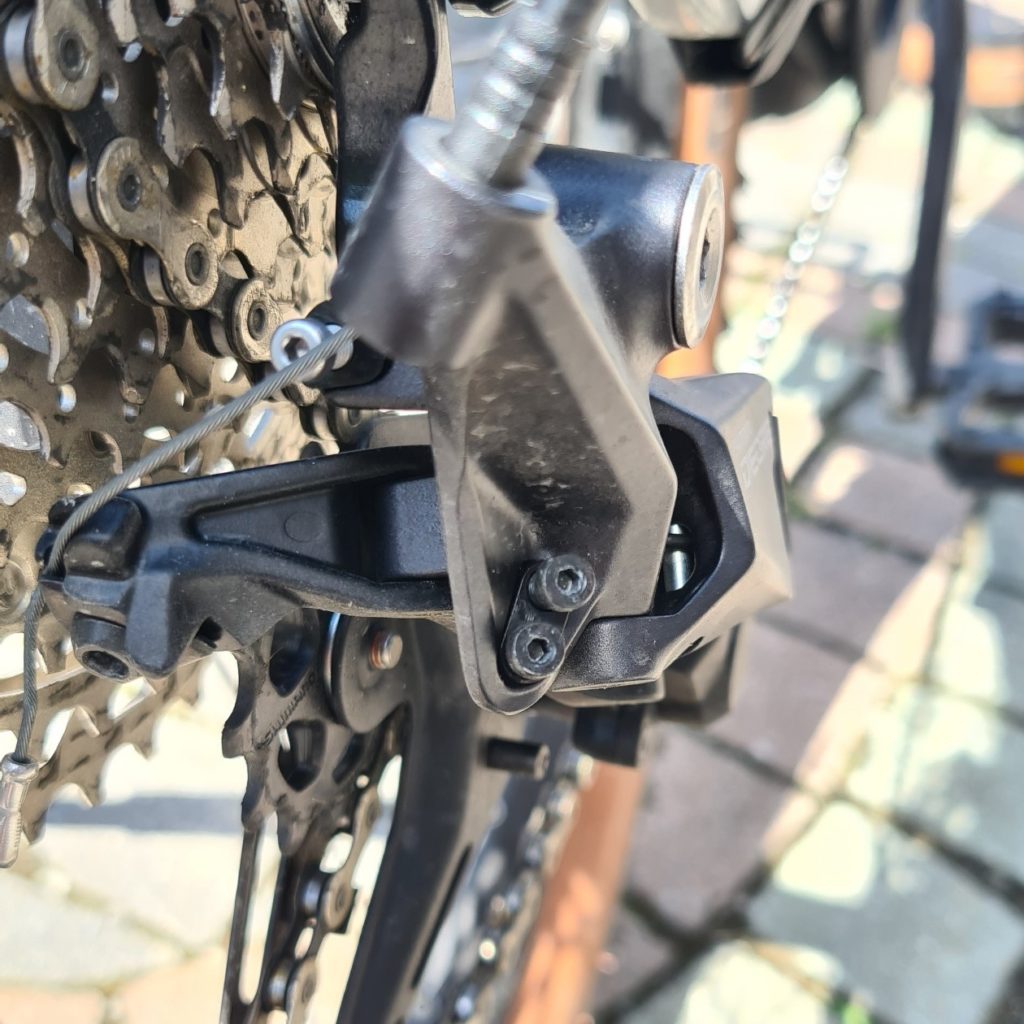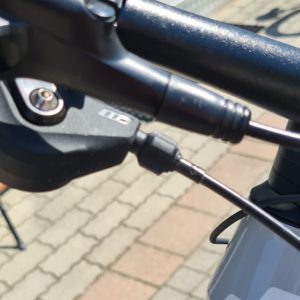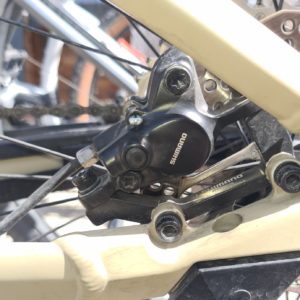
How to: Rear derailleur adjustment
Do you skip gears when changing gears or not? Are you shifting very slowly? Or does your chain fall off? It has often to do with the rear derailleur adjustments. In this blog you will learn how it happens and what you can do about it.
The parts that are important when adjusting a rear derailleur are the:
- H-limit screw
- L-limit screw
- Barrel-adjuster
- B-limit screw
Tools you will need are a torx set or what makes it even easier is a torque spanner to adjust the rear derailleur. Also you need a repair stand to test the chain and shifting.
Starting on your rear derailleur
If you notice that the shifting of your bike is not optimal, this is probably due to the rear derailleur. Before you start repairing, take a look at the rear derailleur hanger.
If you see that it is bent, you can fix it all you want, but the adjustment will never work. Then you have to replace or straighten it. You can buy this tool to straighten it, or simply buy a new one.
When starting, if your bike has several front chainrings, shift it to the largest one, and your rear chainring shift to the smallest one. Even if it is already on the smallest one, try to keep shifting until it doesn’t work anymore. When you cannot get the chain on the smallest sprocket, it is held back by the H-screw or the cable.
First screw in the H-screw counter clockwise, then pedal and shift back. If this does not work, turn the barrel-adjuster clockwise until it makes the switch.

H-Limit screw
The H-limit screw ensures that your chain does not drop the smallest sprocket.
When you don’t know which screw is the H-limit screw, just turn it. If it moves, you know it is the H screw. First, turn the bar-adjuster clockwise a few turns.
It is time to adjust the H-screw. First, screw it until your chain hits the next sprocket. The H-screw is now too tight. Now we are going to turn it back a quarter at a time. The trick is to listen. When the chain returns to the smallest sprocket and makes no more noise, the H-screw is correctly adjusted. If there are two positions at which they make no noise, choose the tightest.

Barrel adjuster
The purpose of the barrel-adjuster is how tight or loose the cable is. It is important to note that there is an acceptable adjustment range.
If there are two front sprockets, shift to the highest. If there are three, shift to the middle one. On the rear sprocket, stay on the smallest one. Turn the wheels and shift the chain up one click. If it did not make it to the next sprocket, turn the bar-adjuster a full round counter-clockwise. Try again and check that it now makes the shift. If not, repeat the turning of the barrel-adjuster.
If the screw is completely or almost completely loosened. First set the chain on the smallest sprocket and the outermost shifting position. Next, tighten the screw completely and turn it back one or two turns. Finally, remove the slack from the cable.
Turn the barrel-adjuster until it is clearly within the acceptable range. Shift to the next sprocket. Listen at this one too, and turn the barrel-adjuster until it is again in the acceptable range. If you hear a noise somewhere, turn the barrel-adjuster a quarter turn clockwise. This can be done for all gears except the largest.

L-Limit screw
The L-limit screw, like the H-limit screw, prevents the chain from falling off. Adjust it in the same way as the H-limit screw. Shift the chain to the second largest chainring. Now try to shift to the largest one. If this doesn’t work, it is actually correct because that is exactly what should happen. If it does work, turn the screw back until the chain is on the second largest sprocket. Now turn it back by a quarter turn until the chain lands on the largest sprocket and you no longer hear it. The L-limit screw is now correct.
B-Limit screw
The B-limit screw determines how far or short the chain is from the guide pulley. If the bike shifts well, you do not need to look at this.
The adjustment is checked by shifting the chain to the smallest front sprocket and the largest rear sprocket. Most derailleurs for road and mountain bikes require a distance of between 5 and 6 millimetres. Use an Allen key to check the distance. To increase the clearance, tighten the B-limit screw, to reduce the clearance, loosen the B-limit screw.
Your bike is now properly adjusted!





